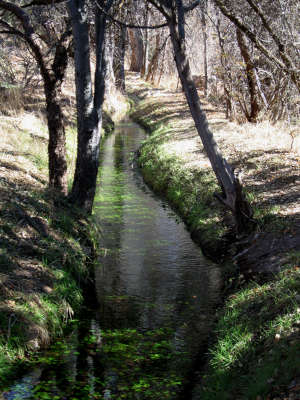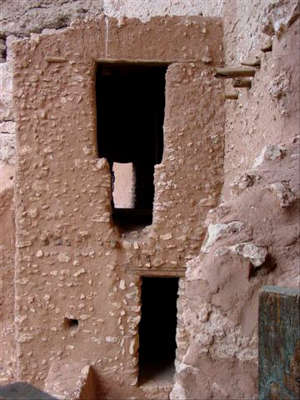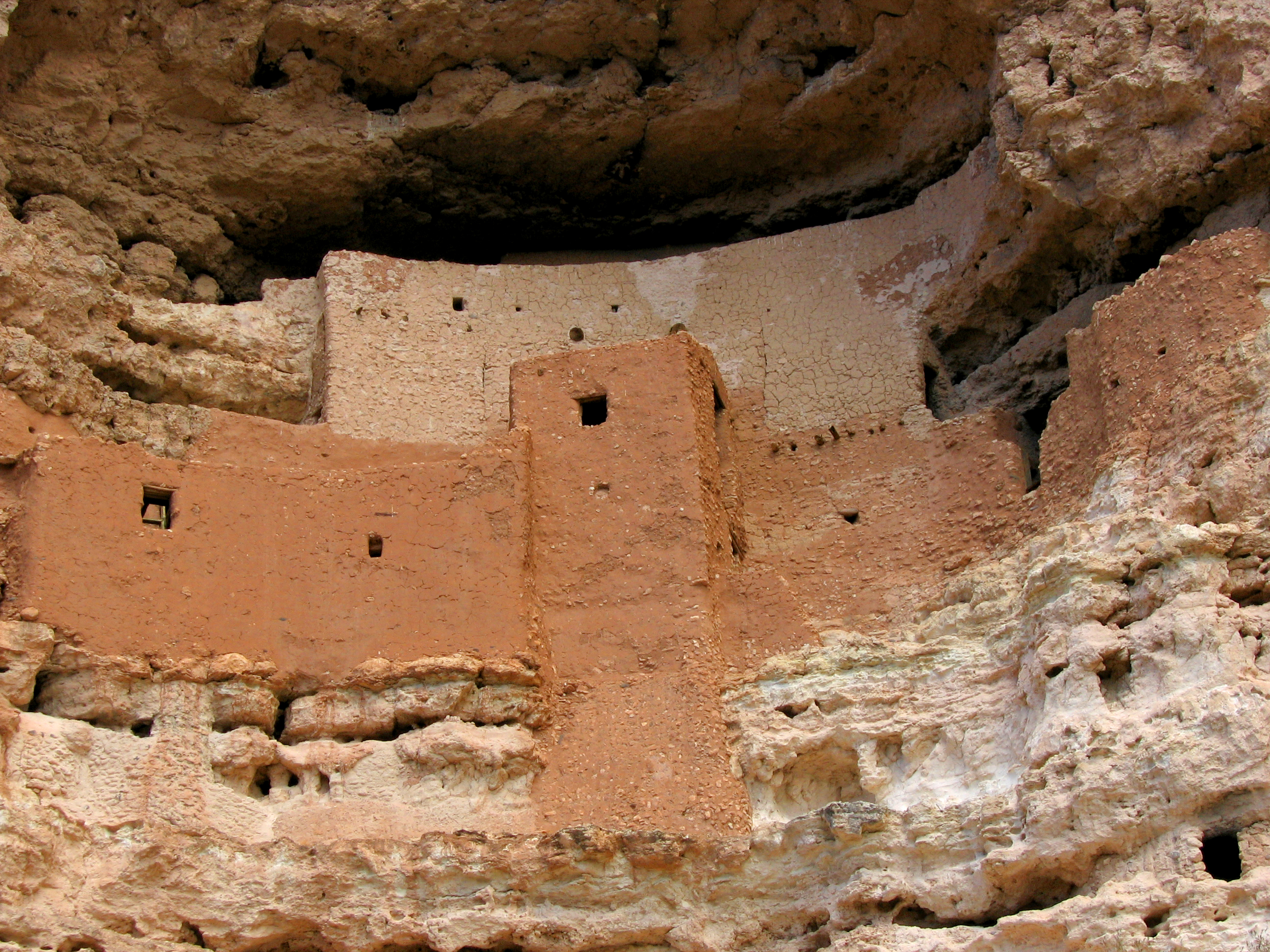Montezuma Castle

Montezuma Castle

A Sinagaua ditch still flows
Around 1200 CE the Sinagua began to build the beautiful five-story, 20-room Montezuma Castle, into an overhang in a limestone cliff above Wet Beaver Creek. Standing guard above a now mostly vanished 45-room pueblo, Montezuma Castle sheltered up to 300 people and was accessible only by climbing long, steep ladders.
Several miles up the creek is another Sinagua ruin, set into the crater wall of Montezuma Well. The well formed when a gigantic limestone cavern created by an underground hot spring collapsed, leaving a crater in the hill. Nearby Wet Beaver Creek cut an outlet through the well's base and the 1,000-gallon-per-minute spring at the bottom of the 55-foot-deep well maintained a constant water flow. The valley's earliest inhabitants discovered the well and used the outlet to provide a steady supply of water to their hand-built community irrigation system.
The irrigation system they built was so good that when the Euro-Americans arrived several hundred years later, they only had to clean the silt out and the water was flowing again. However, because the ruins of Montezuma were so accessible to the general public, they were thoroughly looted before any governmental protection happened. Much of the story of the people who lived there so long ago was lost to a people who thought grubbing for money endowed them with culture.

Chaco-style T doorways
at Montezuma Castle
There have been successful archaeological excavations in the area. The results of those show the structures were progressively built starting around 1200 CE and were abandoned by 1400 CE, like most of the rest of the Hohokam and Mogollon world.
Beginning sometime between 1000 CE and 1200 CE, Athapaskans began moving into the area in search of land and food. They were more warlike than the Puebloans, and they eventually settled out into half-a-dozen flavors of Apache and Navajo. Couple their warlike traits with a bad drought in the 1100s, another in the late 1200s and another, worse drought, in the late 1400s and you can see how the local cultures collapsed. Montezuma Castle, the dwellings at Montezuma Well and the cliff villages built in the Sierra Ancha Mountains were clearly built with defense in mind.
Some Native American legends hold that our world, the Fourth World, started here long ago. Human beings fled the first three worlds just ahead of rising floodwaters caused by gods disgusted with human strife, greed and deceit. Human beings escaped by wiggling through this hole in the roof of the Third World. The floodwaters rose into the bottom of the well and then halted, for now.

Montezuma Castle close up
Lower photo courtesy of Wikipedia userid Postdlf, CCA-by-SA 3.0 License
Sites of the Ancients and approximate dates of occupation:
Atsinna : 1275-1350
Awat'ovi : 1200-1701
Aztec : 1100-1275
Bandelier : 1200-1500
Betatakin : 1275-1300
Casa Malpais : 1260-1420
Chaco Canyon : 850-1145
Fourmile Ranch : 1276-1450
Giusewa : 1560-1680
Hawikuh : 1400-1680
Homol'ovi : 1100-1400
Hovenweep : 50-1350
Jeddito : 800-1700
Kawaika'a : 1375-1580
Kuaua : 325-1580
Mesa Verde : 600-1275
Montezuma Castle : 1200-1400
Payupki : 1680-1745
Poshuouingeh : 1375-1500
Pottery Mound : 1320-1550
Puyé : 1200-1580
Snaketown : 300 BCE-1050
Tonto Basin : 700-1450
Tuzigoot : 1125-1400
Wupatki/Wukoki : 500-1225
Wupatupqa : 1100-1250
Yucca House : 1100-1275